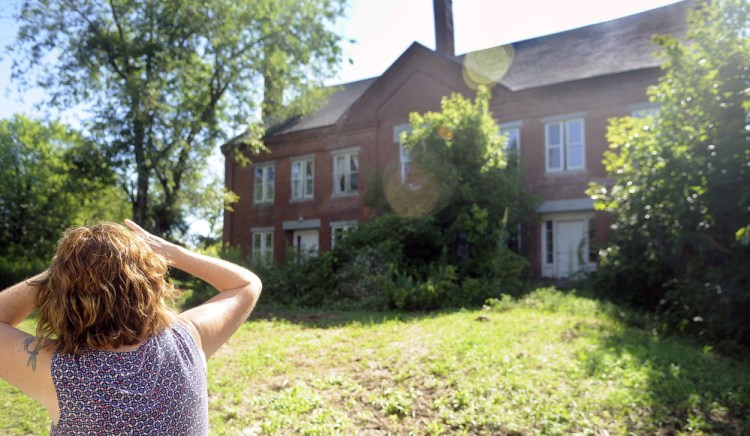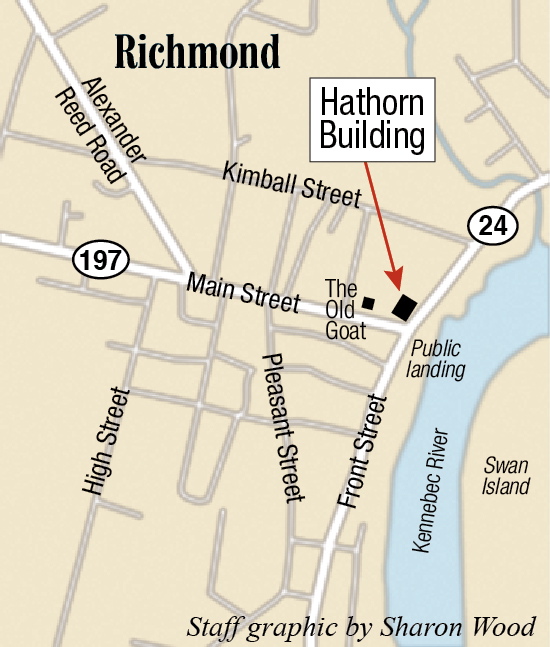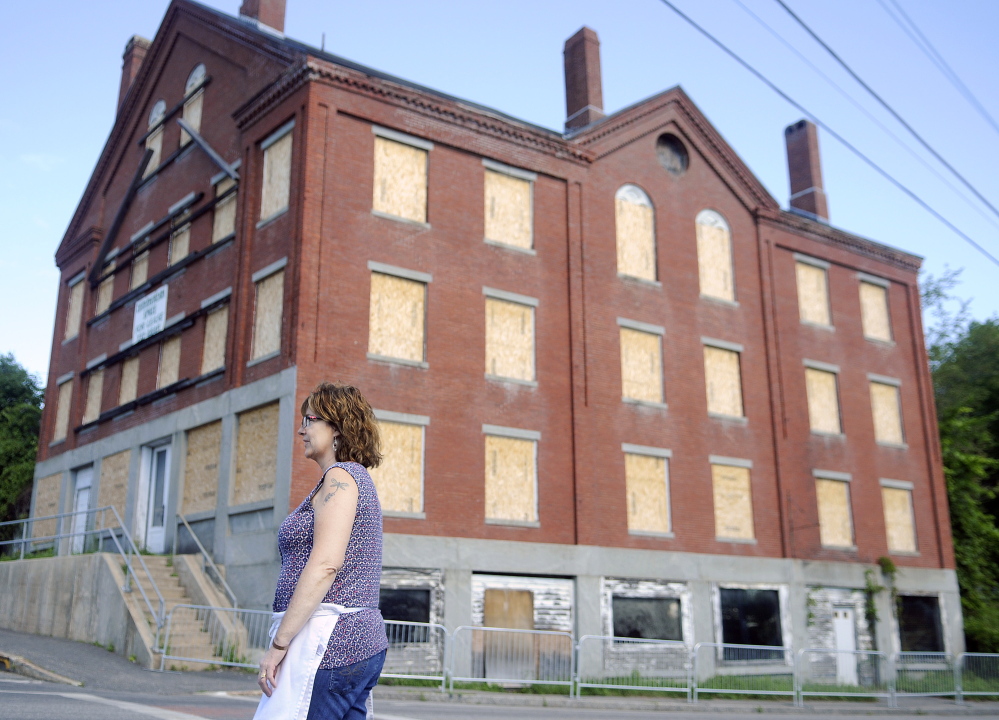A historic downtown Richmond building that has gone through multiple owners and renovation attempts in the last decade is being sold to a developer who plans to create apartments and commercial units there.
The developer, Les Fossel, a former state legislator and the owner of a restoration and historic preservation company, said the Hathorn Block, the five-story brick building on the corner of Front and Main streets, is a key to the downtown’s character and needs to be restored.
“This building has twisted in the wind for 18 years and longer because nobody could make the numbers work,” Fossel said.
His plan to make the numbers work includes using a $110,000 loan approved by the town this week, a $110,000 loan from Coastal Enterprises, Inc. in Wiscasset, and federal and state historic preservation tax credits, he said.
Fossel will present his plan to residents Wednesday at an information session after a special town meeting. His plan includes completing the first phase, which includes restoring the exterior, by the winter and having the building ready to be rented by the end of 2016. Fossel said there will be 11 apartments on the second through fifth floors and commercial spaces on the first floor and the Front Street side of the second floor.
He’s anticipating the entire project will cost $2.2 million with the historic tax credit covering 38 to 45 percent of the costs.
The special town meeting scheduled for 6 p.m. Wednesday at Marcia Buker Elementary School is for residents to approve spending around $14,000 to resume using the city of Gardiner’s ambulance service. Residents also will be asked to authorize the selectmen to enter a multi-year contract and to weigh in on whether to put weight limits on Weeks Road in anticipation of paving it this year. The presentation about the Hathorn Block will take place at the end of the meeting.
Fossel plans to buy the property from Bluebird Investments, LLC, for $1, he said. The company is owned by the widow of the last person who tried to develop the property, Ronald K. Goodridge, of Hancock, New Hampshire, Fossel said.
For the town, the planned development is a way to save a key building, said Peter Warner, chairman of the Board of Selectmen.
Because of the building’s deteriorating condition, the town has been considering whether to demolish it. The sidewalk around the building is blocked because bricks and glass had fallen, and the windows are boarded up with plywood.
The $110,000 loan from the town is being funded by the downtown tax-increment financing district, which captures the tax revenue from new developments. Around $600,000 is available in the fund, Warner said. The town also anticipates providing some type of tax break to the development, he said.
The building’s current owner owes more than $12,000 in property taxes dating back to 2011, according to the town clerk.
Warner said the building has been vacant for the last 15 years, although a few owners have tried to redevelop the property in that time.
The building, completed in 1850, was built by Jefferson and Joseph Jackson Hathorn, brothers whose family included key early figures in the development of Richmond, said Jay Robbins, the town historian. When it was built by the Hathorns, who were involved in shipping and shipbuilding at the waterfront, the building was by far the largest building in town, Robbins said. The upper floors were built as a residence, and initially a bank was located on the Front Street side of the first floor and a dry goods store was on the Main Street side, he said.
Its uses rotated over the next century and a half and included a post office, a hotel, a Central Maine Power Co. appliance store and a barber shop, Robbins said. It doesn’t appear the building was ever used to its full potential, but it played a crucial role in the village with its various businesses and housing.
“I’m really happy the town and others are working to make it happen,” Robbins said of the redevelopment. “I personally would hate to see that building not there. It really is the major gateway to the village.”
The Hathorn Block also has been on Maine Preservation’s list of most endangered historic properties since 1997, longer than any other property that hasn’t been demolished or rehabilitated.
Greg Paxton, executive director of the Falmouth-based historic preservation organization, said the plan is an exciting prospect for the town.
“Its revitalization can result in being a major catalyst for other property owners to improve their properties,” he said. “Instead of having the end of Main Street sort of end without any activity, suddenly it would be a major focal point for the community.”
The state and federal historic tax credits that Fossel plans to use for the redevelopment are critical for these types of project, Paxton said. Since the state introduced its program in 2008, 65 projects have received the tax credits, which allow a developer to be reimbursed for a portion of the project costs.
“We’re certain, without the tax credits, that those would not have happened,” Paxton said.
Fossel said he still will need additional funding for the project’s second phase after the initial exterior work. That work, set to be done by the winter, will include restoring the bricks and installing new windows, Fossel said. The entire project will include adding garages for some of the apartment units, he said.
Fossel hopes to find commercial users that will not just fill the spaces but also add something to the downtown, such as a bakery or a bookstore, he said. It’s necessary to “make things work for everybody,” Fossel said. “That’s what the key is here.”
Paul Koenig — 621-5663
Twitter: @pdkoenig
Send questions/comments to the editors.





Success. Please wait for the page to reload. If the page does not reload within 5 seconds, please refresh the page.
Enter your email and password to access comments.
Hi, to comment on stories you must . This profile is in addition to your subscription and website login.
Already have a commenting profile? .
Invalid username/password.
Please check your email to confirm and complete your registration.
Only subscribers are eligible to post comments. Please subscribe or login first for digital access. Here’s why.
Use the form below to reset your password. When you've submitted your account email, we will send an email with a reset code.